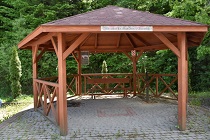 There is a lot of truth in the Polish proverb that "good water makes you healthy". This is evidenced by the growing popularity of health resorts offering treatment therapies with the use of mineral waters. Poland occupies the seventh place in Europe as regards the number of health resorts, 2/3 of which are located in the southern part of the country - in the Carpathians, the Carpathian Foredeep and the Sudetes.
There is a lot of truth in the Polish proverb that "good water makes you healthy". This is evidenced by the growing popularity of health resorts offering treatment therapies with the use of mineral waters. Poland occupies the seventh place in Europe as regards the number of health resorts, 2/3 of which are located in the southern part of the country - in the Carpathians, the Carpathian Foredeep and the Sudetes.
According to "Balance of mineral deposits in Poland as of 31 December 2020", 60 out of 111 documented deposits of curative water were exploited, and the total annual water intake amounted to almost 1.8 million m3. Can another group of localities where curative water is extracted soon be joined? Anna Bagińska, head of the PGI-NRI Promotion and Communication Office, talks with Izabella Gryszkiewicz from the Department of Reservoir and Economic Geology at the Polish Geological Institute - NRI about the chances of developing the so far unused and initially identified deposits of curative water in the Carpathians and the Carpathian Foredeep.
Anna Bagińska: In September 2021, the Polish Geological Institute - NRI made an assessment of the raw material and economic potential of unused and initially recognized deposits of curative water in the Carpathians and the Carpathian Foredeep. It is worth reminding what properties such water must possess, in order to be classified as curative water.
Izabella Gryszkiewicz (IG): The simplest definition is that curative water is underground water, which is not contaminated chemically and microbiologically, and its mineralization is at least 1g/dm3 or contains a specific concentration of one of the following ions: ferrous, fluoride, iodide, sulfur, metasilicic acid, radon or carbon dioxide. The minimum concentrations for each of these components are precisely defined by the Geological and Mining Law of 2011.
AB: In the Carpathians and Carpathian Foredeep there are in total 41 health resorts, and many of them - such as Krynica-Zdrój, Iwonicz-Zdrój or Rabka-Zdrój owe their reputation to the curative water. Is the implementation of the task entitled "Evaluation of the raw material and economic potential of unused and initially recognized deposits of medicinal waters along with an indication of perspective areas for their extraction and development. Carpathians and Carpathian Foredeep" mean that in this region there still is a need to capture new deposits of this type?
IG: The landscape values make tourism an important, dynamically developing sector of the economy in the Carpathian and Carpathian Foredeep region. In addition, today more than ever we have the need to take care of our health. The combination of these two factors is an opportunity for the development of many localities with deposits of curative water. Obtaining the status of a spa commune (the example of Uniejów) means a strong economic position, a higher quality of life for the residents and an attractive image. These are certainly sufficient reasons to examine the potential of the curative water and to indicate optimal directions for their use.
AB: As a result of conducted research, 8 locations have been identified as the most prospective for obtaining new deposits of highly mineralized curative water. Which regions have received such nominations?
IG: In the Carpathians, we have identified the regions of Krosno, Krościenko near Dunajec, Nieborów and Lipnica Wielka as the most promising for obtaining new deposits of curative water, and secondary areas of Słonne, Lesko and Straszydło. In the area of the Carpathian Foredeep we selected the region of Wiślica.
AB: What type of water is it and what is its chemistry?
IG: The Krosno region is a prospective area for obtaining curative water of the following types: sodium-chloride (Cl-Na), chloride-hydrocarbonate-sodium (Cl-HCO3-Na) or hydrocarbonate-chloride-sodium (HCO3-Cl-Na). It should be mentioned that curative water of a similar types is used today in the area of Rymanów-Zdrój and Iwonicz-Zdrój. The region of Krościenko near Dunajec is prospective for the intake of bicarbonate-chloride (szczawa-type) mineral water, with mineralization close to 3600 mg/dm3, and the regions of Lesko, Lipnica, Nieborów, and Straszydło for sulfide waters. Water samples taken in the region of Lesko and Lipnica are characterized by a distinct smell of hydrogen sulfide. In the region of Słonne we can obtain brines with iodide content while in the region of Wiślica - waters of SO4-Ca type. Their mineralization ranges from 1000 to 3000 mg/dm3.
Next to thermal waters, szczawa-type and carbonic acid waters are the most sought-after types of groundwater classified as minerals. The main specific component of szczawa-type water is the dissolved carbon dioxide. The concentration of carbon dioxide in szczawa-type water is not less than 1000 mg/dm3. Acid-carbonated waters, which are poorer in this component, contain at least 250 mg/dm3. Szczawa-type and carbonic acid water is used in balneotherapy for baths and inhalations, they are also a valuable raw material for the bottling industry.
Sulfide water contains at least 1 mg/dm3 of divalent sulfur, found in the form of hydrogen sulfide and its dissociation products - hydrogen sulfides, sulfide ion and hydrogen polysulfides. Sulfide waters are a valued resource used in balneotherapy for baths and various types of irrigation. Sulphate and sulphide water are used for balneotherapeutic, recreational purposes.

The “Maria" curative water spring in Krościenko near Dunajec (fot. R. Patorski)

Spring "Jacek" (spring niche) (photo: T. Gągulski)

Gazebo and underground reservoir in Nieborów (photo: T. Operacz)
AB: What methods and materials were used for this assignment?
IG: In the first stage of the study, we used primarily archival data collected in the National Geological Archive and in numerous databases maintained by the Polish Geological Institute. Critical analyses were made on geological, hydrogeological, hydrogeochemical and deposit data gathered in the Data Bank of Groundwaters Classified as Minerals, Register of Mineral Deposits and Mining Areas - System of Management and Protection of Mineral Resources MIDAS, Central Geological Database and Monitoring of Groundwaters database. Important information was also provided by published archival studies.
We started our work with an overview assessment, thanks to which we made a general characterization of the occurrence of curative water in a given region. Next, we selected 14 prospective areas for curative water exploration, which were subjected to a thorough analysis and preliminary assessment, after which 8 locations were designated for further studies. The next stage of research already included field and laboratory work. As part of a field inspection, we assessed the condition of intakes - boreholes and curative water sources, carried out field hydrogeological measurements, took water samples and carried out analyses of their chemical composition. We determined physical properties of waters, ionic composition of waters and gas content, and for some of them we additionally determined radon and hydrogen sulfide content. An important part of the research was to identify possibilities of intake of therapeutic waters and their management, as well as risk assessment.
AB: The results of the research indicate that there is considerable potential for the development of new curative water intakes. What next steps are needed so that their exploitation can begin?
IG: The development of geological work documentations and the drilling of exploration and identification boreholes is an important issue. This will provide accurate information on the hydrogeological and deposit parameters of the waters planned for extraction.
In the selected areas, we have indicated optimal locations for drilling boreholes. The deepest holes should be drilled in Krosno (900 m) and Słonno (400 m). In the remaining locations, the depth of boreholes will vary from 100 to 150 m.
AB: How can the curative water captured in the indicated prospective areas be used?
IG: As the basic direction of their use, we recommend spa treatment, carried out by appropriate institutions - hospitals, sanatoriums, clinics and natural medicine institutions. There the curative water is used for drinking, inhalations and various baths. After the completion of sanatorium treatment and in preventive treatment, side medicinal products are successfully used.
Some spas produce spa products (salts, lyes, bottled brines) based on their own natural resources. The most well-known therapeutic salts include Bochnia and Iwonicka salt. They are used to prepare baths and inhalations with therapeutic properties.
The curative water can also be used for bottling. Highly mineralized curative chloride waters are bottled in Dębowiec and Rabka-Zdrój, as well as in Zabłocie and sold as curative brines. Mineral water tablets, which are used in the treatment of respiratory and digestive system diseases, are also a highly valued product. Cosmetics based on mineral waters are produced in, among others: Iwonicz-Zdrój, Busko-Zdrój and Solec-Zdrój.
AB: Thank you for the interview and good health!
Location of selected prospective areas of therapeutic waters in the Carpathian province
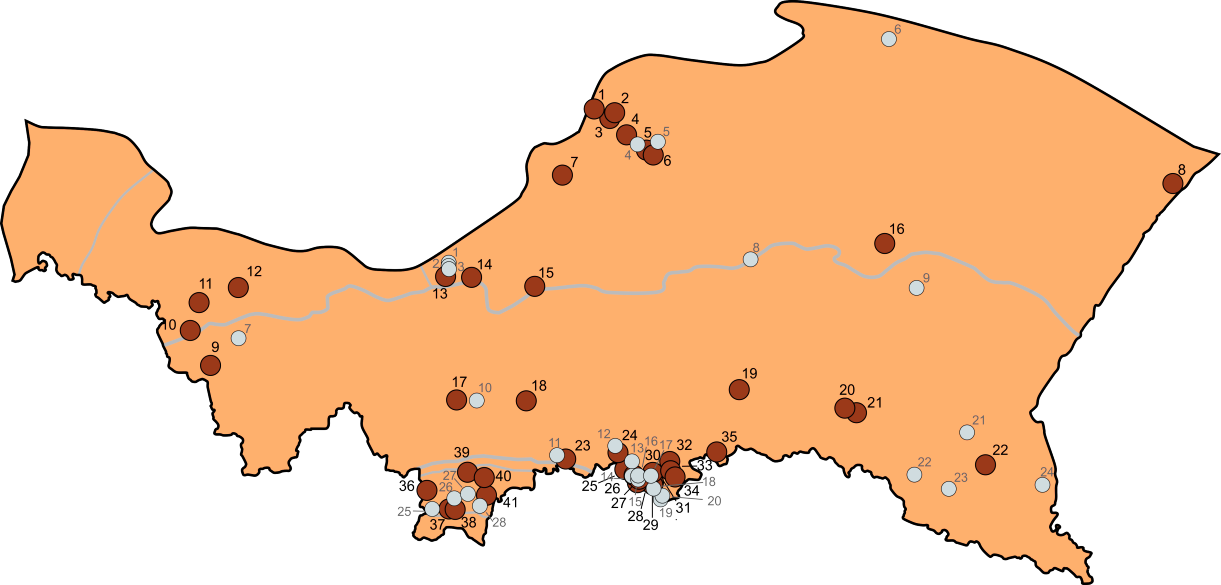
Location of curative water deposits (used and not used) in the Carpathian area
Explanations: Deposits in use: 1 - Las Winiarski; 2 - Busko-Północ; 3 - Busko II; 4 - Dobrowoda; 5 - Solec-Zdrój; 6 - Wełnin; 7 - Cudzynowice; 8 - Horyniec; 9 - Ustroń; 10 - Dębowiec III; 11 - Zabłocie-Korona; 12 - Goczałkowice-Zdrój I; 13 - Swoszowice; 14 - Wieliczka W-VII-16; 15 - Łapczyca; 16 - Rzeszów (S-1, S-2); 17 - Rabka-Zdrój; 18 - Szczawa; 19 - Wapienne; 20 - Iwonicz; 21 - Rymanów; 22 - Polańczyk; 23 - Szczawnica I; 24 - Piwniczna-Łomnica; 25 - Zubrzyk; 26 - Żegiestów-Cechini; 27 - Muszyna INEX; 28 - Szczawnik-Cechini; 29 - Muszynianka III; 30 - Muszyna-Zdrój; 31 - Galicjanka III - Field 1, Field 2; 32 - Krynica-Zdrój I; 33 - Szczawiczne II; 34 - Tylicz I; 35 - Wysowa; 36 - Chochołowskie Termy; 37 - Szymoszkowa; 38 - Zakopane; 39 - Podhale 2; 40 - Białka; 41 - Bukowina
ZUnexploited deposits: 1 - Mateczny I; 2 - Łagiewniki; 3 - Opatkowice; 4 - Dar Natury; 5 - Konstantynów; 6 - Lipa-Zdrój 1; 7 - Jaworze IG-1, IG-2; 8 - Latoszyn-Zdrój; 9 - Nieborów Springs; 10 - Poręba Wielka; 11 - Krościenko n/Dunajcem; 12 - Głębokie Kinga; 13 - Wierchomla Wielka Springs; 14 - Żegiestów-NEX; 15 - Żegiestów-Zdrój Główny; 16 - Żegiestów-Zdrój; 17 - Złockie Z-7; 18 - Muszyna; 19 - Wapienne INEX; 20 - Leluchów L-4; 21 - Lesko (source no. 1, 4); 22 - Komańcza spring no. 1; 23 - Rabe 1; 24 - Czarna Górna spring no. 5; 25 - Siwa Woda IG-1; 26 - Furmanowa PIG-1; 27 - Poronin; 28 - Zazadnia IG-1
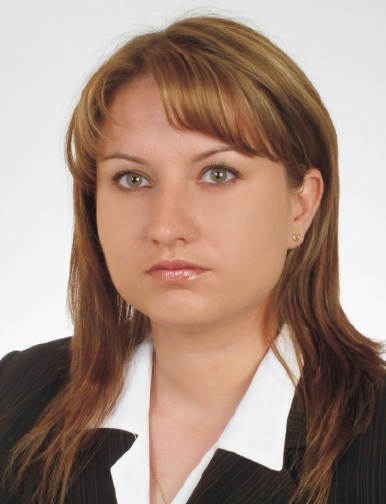 IZABELLA GRYSZKIEWICZ, M.Sc. is a graduate of the Faculty of Geology, University of Warsaw (specialization: engineering geology). In 2013 she completed postgraduate studies at the Warsaw School of Economics in the field of human resources management within various organizations.
IZABELLA GRYSZKIEWICZ, M.Sc. is a graduate of the Faculty of Geology, University of Warsaw (specialization: engineering geology). In 2013 she completed postgraduate studies at the Warsaw School of Economics in the field of human resources management within various organizations.
She has over 10 years of professional experience in projects and documentation in the fields of reservoir geology, geothermics and environmental protection.
Since 2018, she has been employed at the Polish Geological Institute - National Research Institute, where she deals with issues related to the management of groundwater classified as minerals.
She coordinates a task of the Polish Geological Survey called "Maintaining Data Bank of Groundwaters Classified as Minerals (brines, therapeutic and thermal waters)". She took part in a task called the "Assessment of energy and raw material potential of thermal and curative thermal water in selected urbanized areas together with an analysis of their geoenvironmental and economic conditions".
She is licensed as a Category II, IV and VII geologist.
Translated by: Tomasz Trzpil














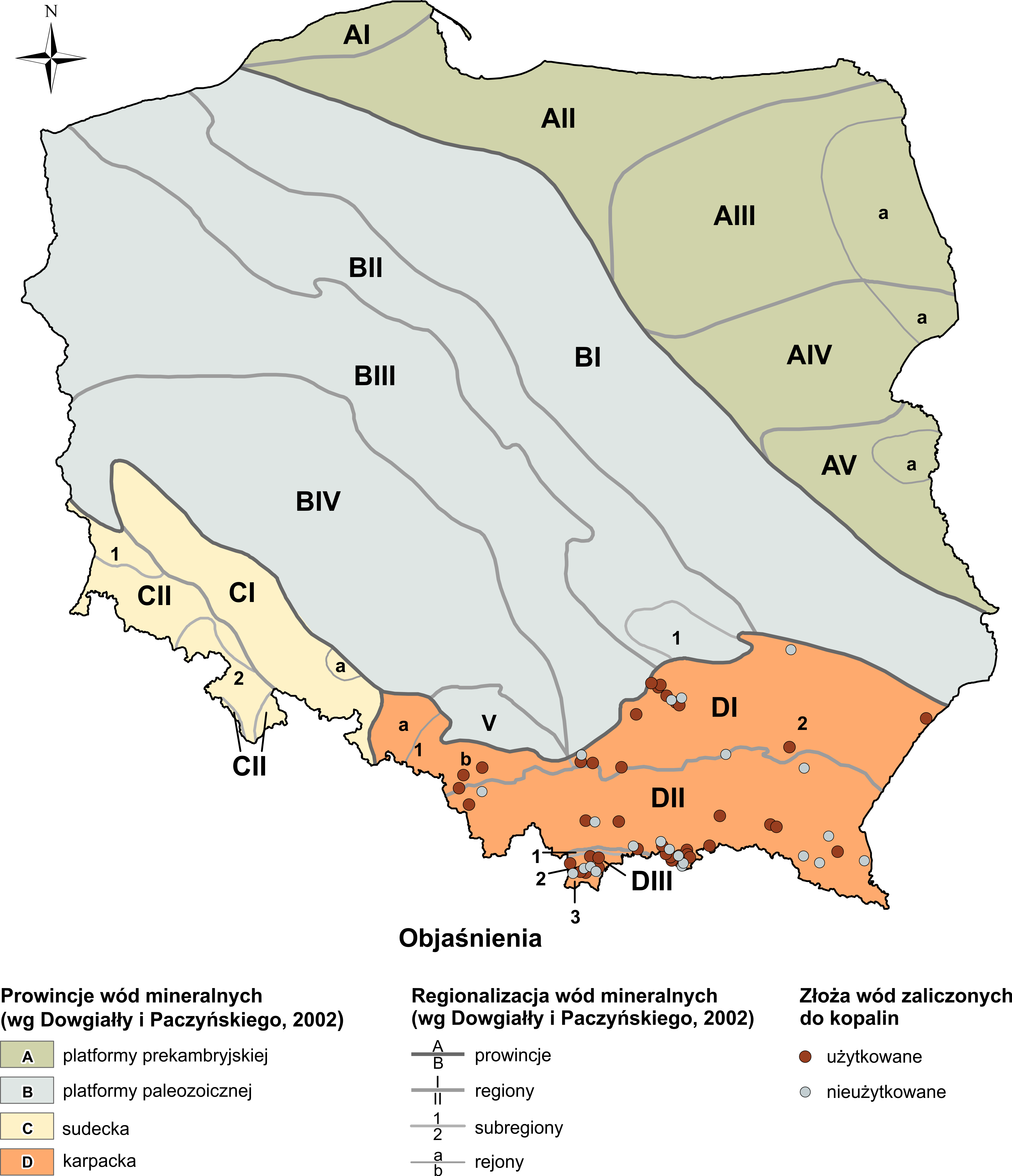
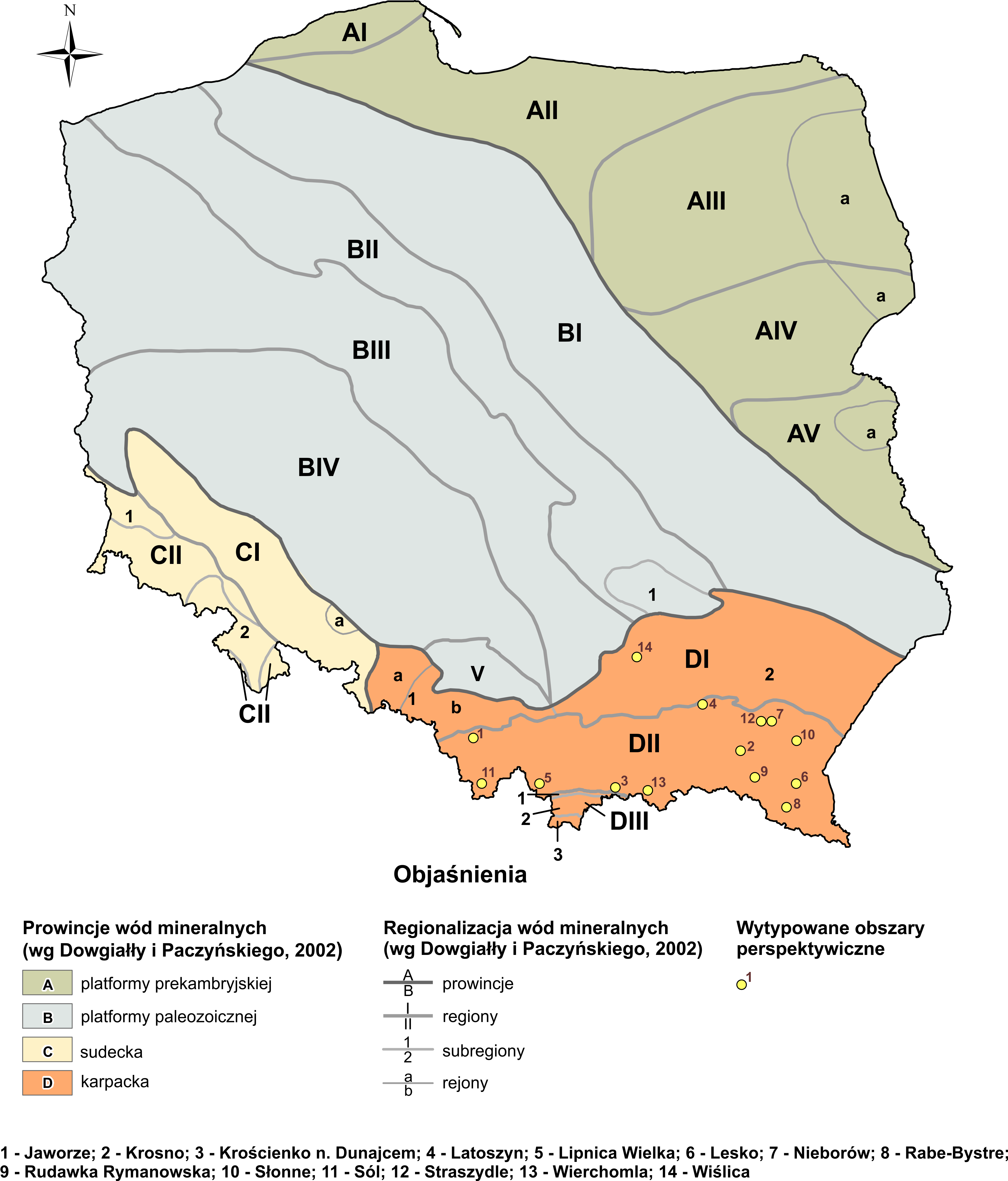
 PGI-NRI offer
PGI-NRI offer Mineral resources of Poland
Mineral resources of Poland  Oil and Gas in Poland
Oil and Gas in Poland 




 Subscribe to RSS Feed
Subscribe to RSS Feed